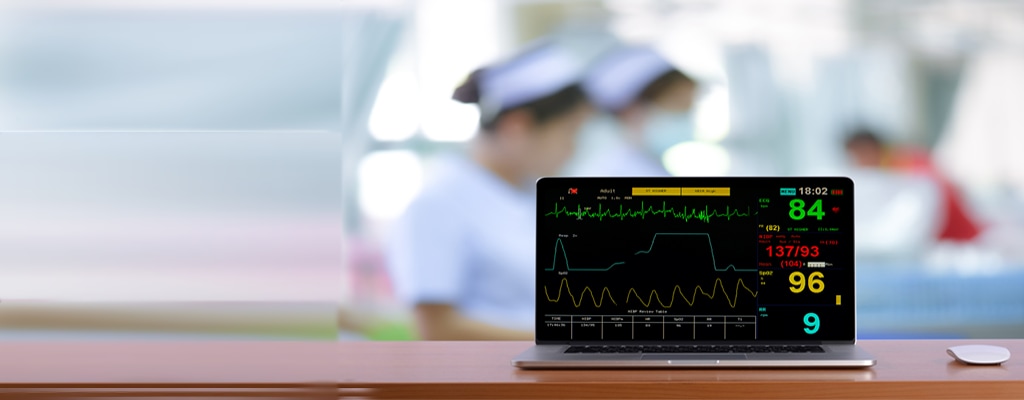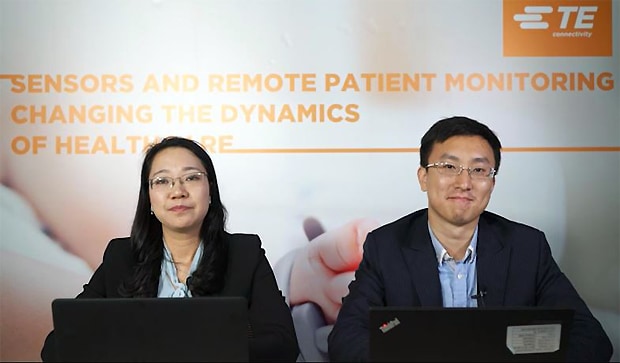
Trend Insight
Real-time and Remote Patient Monitoring Trends
Discover the healthcare technology and device trends transforming patient monitoring that could reduce allow patients in remote areas to get the care they need and reduce hospital readmission rates.
Imagine getting preventative care outside of a hospital setting. It is increasingly taking place today. Startups, Fortune 500 technology companies and medical providers are all looking at new products and devices that could revolutionize medical care and streamline costs by reducing hospital readmission rates, and allowing patients in remote areas to get the care they need. Remote patient monitoring is having its day, and there is no let up in sight on this evolving trend. It could fundamentally improve patient outcomes and quality of care across the medical field. This includes onsite in hospitals and clinics, for at-home care, and for remote care in less populated areas of the country and in developing countries. As technology continues to dramatically evolve, many believe the Internet of Things (IoT) could play a pivotal role in industry after industry — but especially in creating a more connected healthcare ecosystem. In healthcare, IoT may just redefine how apps, devices and people interact and connect with one another to deliver healthcare solutions. The benefits? It could help reduce costs, improve outcomes and disease management, and enhance patient experiences.
Here are some of the trends taking place in the patient monitoring field and the key market drivers that design engineers need to consider. Clearly, there is overlap as IoT spans two important areas: the development of smart, connected products and devices, and the proliferation of big data.
Aging Population
An aging population vulnerable to chronic disease is driving the market
The world population is aging. People are living longer with good health, but many are also living longer with chronic disease — putting a strain on healthcare systems and resources. According to the World Health Organization, the number of people aged 65 or older is projected to grow from an estimated 524 million in 2010 to nearly 1.5 billion in 2050, with most of the increase in developing countries.
According to another study in the Journal of the American Medical Informatics Association (JAMIA), “Remote home monitoring continues to boost patient engagement with their overall health and adherence to provider recommendations for managing their chronic medical conditions.”
Patient Centric Care
The focus in the healthcare industry is shifting to value-based, patient-centric care and outcomes
Are healthcare companies and providers moving to value-based care? Industry analysts say yes. The increased focus on value-based care is shifting financial incentives to a healthcare model where providers are compensated based on how their patients fare, rather than by the number of tests, visits, or procedures performed. It’s about the quality of care not the quantity.
But here’s where new devices and technology could make a big impact, and in some cases already is. As one example, data sensors could help a health care provider detect potential issues in a prosthetic knee joint, helping them summarize the bilateral force distribution and pressure patterns across the lower extremity. In addition to offering huge value to the patient — alerting them to the first hint of strain — the provider benefits by using 24/7 monitoring that allows for adjusting treatment, and the payer avoids the additional costs of prolonged recovery or remedial treatment.
This is just another example where advances in sensor technology are making this possible — in part by making gathering new data much easier.
Big Data
Healthcare big data is having a huge impact on the medical field in all ways
Some industry analysts believe that ‘big data’ is fueling the healthcare industry’s biggest trends — such as precision medicine, predictive analytics, and machine learning, according to an article in HealthIT Analytics. Big data is already having a profound impact on the healthcare field in areas from oncology to neurology, cardiology, genomics, and other specialties with more personalized therapies and diagnostic tools. And patient-specific data is increasingly available through a new generation of devices and applications that collect information through wearables, home monitors, and smartphones. According to a paper by Stanford Medicine on “Harnessing the power of data in healthcare,” Stanford believes that data is permeating every component of the healthcare ecosystem — medical research, daily life, the patient experience, ongoing care, prediction and prevention. Says the report:
“A focus on data in the coming years has the potential to make healthcare more preventive, predictive and personalized, and meaningfully reduce health care costs and lead to better patient care.”
Big data allows medical providers and healthcare professionals to accumulate and analyze on a much larger population base and assess huge volumes of new data — opening up new areas for research and treatment opportunities. Again, remote monitoring systems can help collect this information and play a role in boosting analysis of this healthcare-related big data.
IoT
The increasing role of Internet of Things (IoT) for remote monitoring and healthcare applications in general
Most would agree, the Internet has changed everything. Now many believe that the Internet of Things (IoT) will change everything yet again. IoT will eventually allow patients and providers to work together for more effective chronic disease management, deeper engagement, and more open communication.
By integrating IoT features into medical devices, it promises to greatly improve the quality and effectiveness of healthcare, bringing especially high value care for the elderly, patients with chronic conditions, and those requiring constant supervision. There is a growing interest in IoT-driven healthcare services and wearable medical devices that feature sensors, actuators and other mobile communications methods that allow patient data to be continuously monitored and transmitted via cloud-based platforms. These devices can alert doctors and
nurses of important changes in vital signs. It is even becoming big business. Spending on healthcare IoT could top $120 billion in just four years, by some estimates.
Devices today monitor all sorts of patient behavior – from glucose monitors to fetal monitors to electrocardiograms to blood pressure. And while patients have to often follow-up with a physician, the smarter monitoring devices of tomorrow may change that. For instance, some smart devices today can detect if medicines are being taken regularly at home from smart dispensers. If not, they can initiate a call or other contact from providers to get patients properly medicated. The possibilities offered by the healthcare IoT to lower costs and improve patient care are almost limitless.
Wearables
Wearable medical technology innovations are driving growth, allowing healthcare to reach new frontiers
The clinical application of wearable medical technology is evolving fast as technology companies are partnering with healthcare organizations to help patients and clinicians make better decisions. Consider some of these applications:
- Remote monitoring of sleep and vital statistics for bedridden patients.
- Gloves with Bluetooth sensors that help stroke patients with neurological and musculoskeletal injuries regain mobility in their hands.
- Painless and accurate glucose monitoring.
- Continuous temperature monitoring devices (such as chest straps) that can be used for babies and young children, post-operative patients, cancer patients, and seniors.
- Headband and/or ear buds that measure discomfort in the user’s electroencephalography (EEG) system for better pain management.
- Personalized, AI-based wearable technologies that learn about the user. Think smart watches that recognize and normalize sleep apnea, a dangerous health condition.
- Smart glasses that help the blind see what they can’t see and talk them through situations.
Though many new devices are being developed, there is still a challenge to ensure that the devices can aggregate and share data, and communicate reliably and securely.




